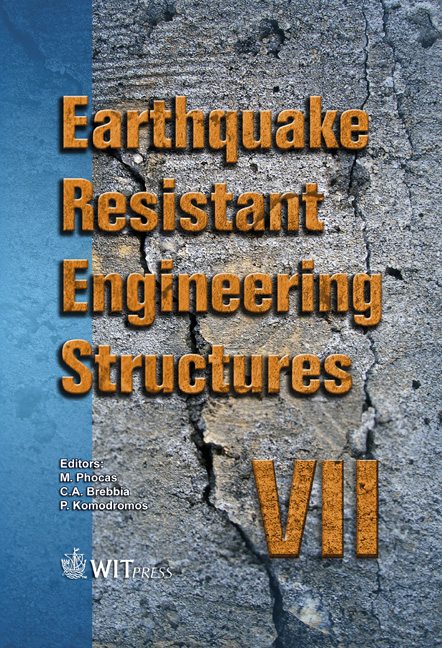The Behaviour Of Akashi Kaikyo Bridge Under Multi Support Seismic Excitation For Low Frequency Motions
Price
Free (open access)
Transaction
Volume
104
Pages
11
Page Range
345 - 355
Published
2009
Size
353 kb
Paper DOI
10.2495/ERES090321
Copyright
WIT Press
Author(s)
L. Bahbouh, H. Yamada, H. Katsuchi, E. Sasaki & C. Theeraphong
Abstract
The purpose of this study is to investigate the behaviour of Akashi Kaikyo Bridge under low frequency multi support seismic excitations which will amplify the bridge response owing to the resonance phenomena impact. Nonlinear static and modal dynamic analyses for seismic waves of different propagation velocities are conducted. It is observed that the propagation wave velocities have a significant effect on the bridge, and the bridge response to different asynchronous input motions at the towers and abutments bases consists of the dynamic component induced by the inertia forces, and the pseudo static component results from the difference between the adjacent supports displacements. For low travelling wave velocities, the response which varies with the velocity is increased due to the pseudo static component. But as the travelling wave velocity grows, the dynamic component increase to be preeminent for infinite propagation velocities. These results are pronounced largely when the travelling seismic waves have dominant low frequencies might coincide some of the bridge frequencies even for high vibrating modes. Therefore, it is required to investigate the response of long span suspension bridges under low frequency travelling seismic excitations. Keywords: Akashi Kaikyo Bridge, low frequency multi support excitation. 1 Introduction Long span structures such as suspension and cable stayed bridges can be subjected to different ground motions along their length due to the spatial variability of the seismic excitation. The spatial variation of seismic motion has been of concern for a number of decades, and it was considered as the result of
Keywords
Akashi Kaikyo Bridge, low frequency multi support excitation.





